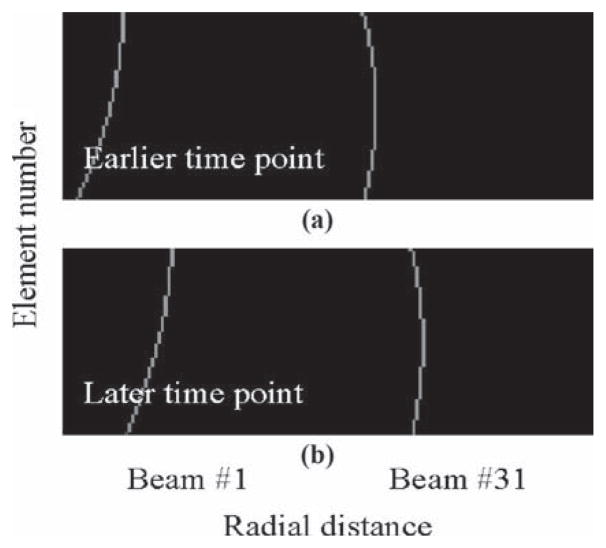Fig. 3.
Two representative sections of a matrix E are shown, each one Ne by n × Nax in size, with n = 2. (a) Element #1, at the top, is closest to beam #1. Accordingly, the signal associated with beam #1 and captured by element #1 comes from deeper within the object, i.e., from a higher radial distance, than for other elements. In contrast, beam #31, sent along with beam #1 in the same transmit event, is closest to the middle of the array. Information regarding beam #31, a matrix Ne by in Nax size, is pasted next to that of element #1. (b) For a later time point, signals associated with both beams tend to come from deeper within the object. The matrix E. which is Nt × Ne by n × Nax in size, consists of Nt sections such as the 2 displayed in (a) and (b).

